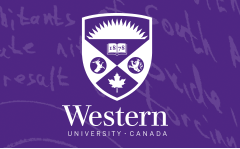Proposal Title
Encouraging students to explore the role of self-assessment during learning: fueling the metacognitive cycle of practice and feedback
Session Type
Poster
Room
Atrium
Start Date
July 2015
Keywords
formative feedback, metacognition, self-assessment, reflective practice
Primary Threads
Teaching and Learning Science
Abstract
Environments that support student learning often include goal-directed cycles of practice and feedback (Ambrose et al. 2010; Ericsson et al. 2003). Such cycles couple well with learning environments where students routinely monitor and reflect upon their own progress—metacognitive practices that guide students toward a path of self-regulated learning (Nicol and Macfarlane-Dick 2007). Instructors can use varied and frequent opportunities for feedback to encourage students to learn metacognitive skills and scaffold new ideas into their current understandings (Shepard 2005).
In my large-enrollment organic chemistry course, learning tasks are framed around cycles of practice and feedback that encourage student self-assessment. In class, students complete an initial exploratory question; upcoming classes are then built around student-proposed solutions. Common solutions that emerge are shown, and students then rationalize and vote on which has the most strengths. Concurrently, students are encouraged to make notes on their own initial attempt. Persistent misconceptions are targeted immediately with clicker questions, then further explored through optional worksheets. Individuals can get personalized worksheet feedback; however, many choose to complete worksheets independently and refer to posted feedback to check their progress. Posted feedback is framed around student answers, exposing them to the common strengths/struggles across the class as they self-assess, and provides direct suggestions to consider while reflecting on their own work. Students are also encouraged to engage in self-assessment through their examinations, as credit can be earned for completing a post-exam reflection on their performance.
This presentation will outline cycles of practice and feedback in a large-enrollment course and describe how these cycles have framed the learning environment to encourage student self-assessment.
Ambrose SA, Bridges MW, DiPietro M, Lovett MC, Norman MK. 2010. How learning works. Jossey-Bass: San Francisco (CA). p. 124-127.
Ericsson KA, Krampe RT, Tescher-Romer C. 2003. The role of deliberate practice in the acquisition of expert performance. Psychological Review. 100(3):363-406
Nicol DJ, Macfarlane-Dick D. 2007. Formative assessment and self-regulated learning: a model and seven principles of good feedback practice. Studies in Higher Education. 31(2):199-218.
Shepard LA. 2005. Linking formative assessment to scaffolding. Educational Leadership. 63(3):66-70.
Elements of Engagement
This poster presentation will show specific examples from an organic chemistry class, but it will also be framed schematically in ways that could be readily transferred to other disciplines. I hope to have many one-on-one discussions with conference attendees about what types of practice and formative feedback opportunities they’ve tried in their own courses.
Encouraging students to explore the role of self-assessment during learning: fueling the metacognitive cycle of practice and feedback
Atrium
Environments that support student learning often include goal-directed cycles of practice and feedback (Ambrose et al. 2010; Ericsson et al. 2003). Such cycles couple well with learning environments where students routinely monitor and reflect upon their own progress—metacognitive practices that guide students toward a path of self-regulated learning (Nicol and Macfarlane-Dick 2007). Instructors can use varied and frequent opportunities for feedback to encourage students to learn metacognitive skills and scaffold new ideas into their current understandings (Shepard 2005).
In my large-enrollment organic chemistry course, learning tasks are framed around cycles of practice and feedback that encourage student self-assessment. In class, students complete an initial exploratory question; upcoming classes are then built around student-proposed solutions. Common solutions that emerge are shown, and students then rationalize and vote on which has the most strengths. Concurrently, students are encouraged to make notes on their own initial attempt. Persistent misconceptions are targeted immediately with clicker questions, then further explored through optional worksheets. Individuals can get personalized worksheet feedback; however, many choose to complete worksheets independently and refer to posted feedback to check their progress. Posted feedback is framed around student answers, exposing them to the common strengths/struggles across the class as they self-assess, and provides direct suggestions to consider while reflecting on their own work. Students are also encouraged to engage in self-assessment through their examinations, as credit can be earned for completing a post-exam reflection on their performance.
This presentation will outline cycles of practice and feedback in a large-enrollment course and describe how these cycles have framed the learning environment to encourage student self-assessment.
Ambrose SA, Bridges MW, DiPietro M, Lovett MC, Norman MK. 2010. How learning works. Jossey-Bass: San Francisco (CA). p. 124-127.
Ericsson KA, Krampe RT, Tescher-Romer C. 2003. The role of deliberate practice in the acquisition of expert performance. Psychological Review. 100(3):363-406
Nicol DJ, Macfarlane-Dick D. 2007. Formative assessment and self-regulated learning: a model and seven principles of good feedback practice. Studies in Higher Education. 31(2):199-218.
Shepard LA. 2005. Linking formative assessment to scaffolding. Educational Leadership. 63(3):66-70.
